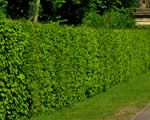 Go to main content
Go to main content
Archive Website of the UK government
Please note that this website has a UK government accesskeys system.
Main menu
Page menu
Home and community

Dealing with a dispute about a high hedge

Find out what you can do if you think that a hedge on a garden boundary is too high. Also, if you have a hedge, or are thinking of growing one, learn about your responsibilities and what type of hedge could suit your garden.
First steps if you think a hedge is too high
Your council won’t consider getting involved in a hedge dispute until you’ve tried other ways to solve the problem first. These include talking to your neighbour about the problem and using mediation.
‘Solving a dispute with a neighbour: an introduction’ explains all the steps you should take before contacting your council, including mediation.
Remember to keep a record of what you have done, like copies of letters or a diary.
Complaining to your council about an evergreen high hedge
If none of the steps outlined in ‘Solving a dispute with a neighbour’ works, tell your neighbours you’re intending to make a formal complaint to the council.
Involving the council should be a last resort.
How to complain to your council
By law, your council can only act on complaints that fulfill certain criteria. For example, the hedge you’re complaining about must be:
- two or more mostly evergreen or semi-evergreen trees or shrubs
- over two metres tall
- affecting your reasonable enjoyment of your home or garden because it’s too tall
- affecting domestic property
If you meet the criteria, you can ask your council for a complaint form. For advice on filling in this form, and for a full list of criteria, read ‘High hedges: complaining to the council’.
Your council may also have information about high hedges on their website.
What you need to pay and why
You might have to pay a fee, which is set by your council. Your council can confirm the amount and if you can get a reduction – for example, because you are on a low income.
A fee is payable because:
- it encourages people to try to settle disputes amicably
- the service benefits an individual rather than the community
- it helps to ensure that complaints are genuine
- in a public consultation about high hedges, most people thought it was fair that the person making the complaint should pay something for the council to intervene in their hedge dispute
What your council will do
If the council upholds your complaint, it can order your neighbours to reduce the hedge to a height that will:
- solve the problems
- prevent it happening again
There is no particular height, in law, that the hedge must be cut down to. Decisions are made on the basis of what is reasonable, and the limit varies according to the circumstances. Your council won't cut the hedge below 2 metres or remove it entirely.
If your neighbours fail to reduce their hedge height in the time specified, they could be prosecuted and fined up to £1,000.
‘High hedges complaints: prevention and cure’ (chapter three onwards) deals with the law on high hedges and the complaints process.
‘Hedge height and light loss’ contains technical information on how councils judge what a reasonable height is for a hedge.
If you're unhappy with the council’s decision
Both you and your neighbour can appeal against the council’s decision. To find out more about appealing and the time limits involved, download ‘A guide for appellants (high hedges)’.
If you think the council didn’t handle your complaint properly, you can complain to the Local Government Ombudsman.
Cutting other people’s hedges and trees
You are allowed to trim branches or roots that cross into your property up to the property boundary. If you do more than this, your neighbour could take you to court for damaging their property.
If you live in a conservation area, or the trees in the hedge are protected by a ‘tree preservation order’, you might need your council’s permission to trim.
For more information, see the leaflet ‘Protected trees: a guide to tree preservation procedures’.
If a hedge is damaging your property
If a hedge damages someone else’s property, its owner may be liable.
You can find out if a hedge or trees are causing damage by employing an arboricultural consultant or a building surveyor. These can also give you specialist advice. Your building insurer might investigate further and act on your behalf.
A problem with single high trees or deciduous hedges
The council can’t deal with complaints about single tall trees or deciduous (non-evergreen). Follow the steps in the leaflet ‘Over the garden hedge’ to try to settle your dispute.
If you own or want to own a hedge
You have certain responsibilities if you own a hedge, so choose carefully which type you grow.
Your responsibilities if you own a hedge
You are responsible for maintaining your hedges so they don’t, for example, damage your neighbour’s property or grow too high.
For more information on hedges, the law and your responsibilities, see section 3 onwards of ‘Over the garden hedge’.
Choosing the right hedge
Before choosing a hedge, consider things like how big it can grow and how much trimming it needs. Your choice of hedge might also be affected by any planning conditions or ‘covenants’ (rules) for your property. Check your house deeds or with your council for more information about any restrictions.
For more advice on choosing the right hedge, talk to your local garden centre or see the links below.
 Facebook
Facebook Twitter
Twitter StumbleUpon
StumbleUpon Delicious
Delicious Reddit
Reddit